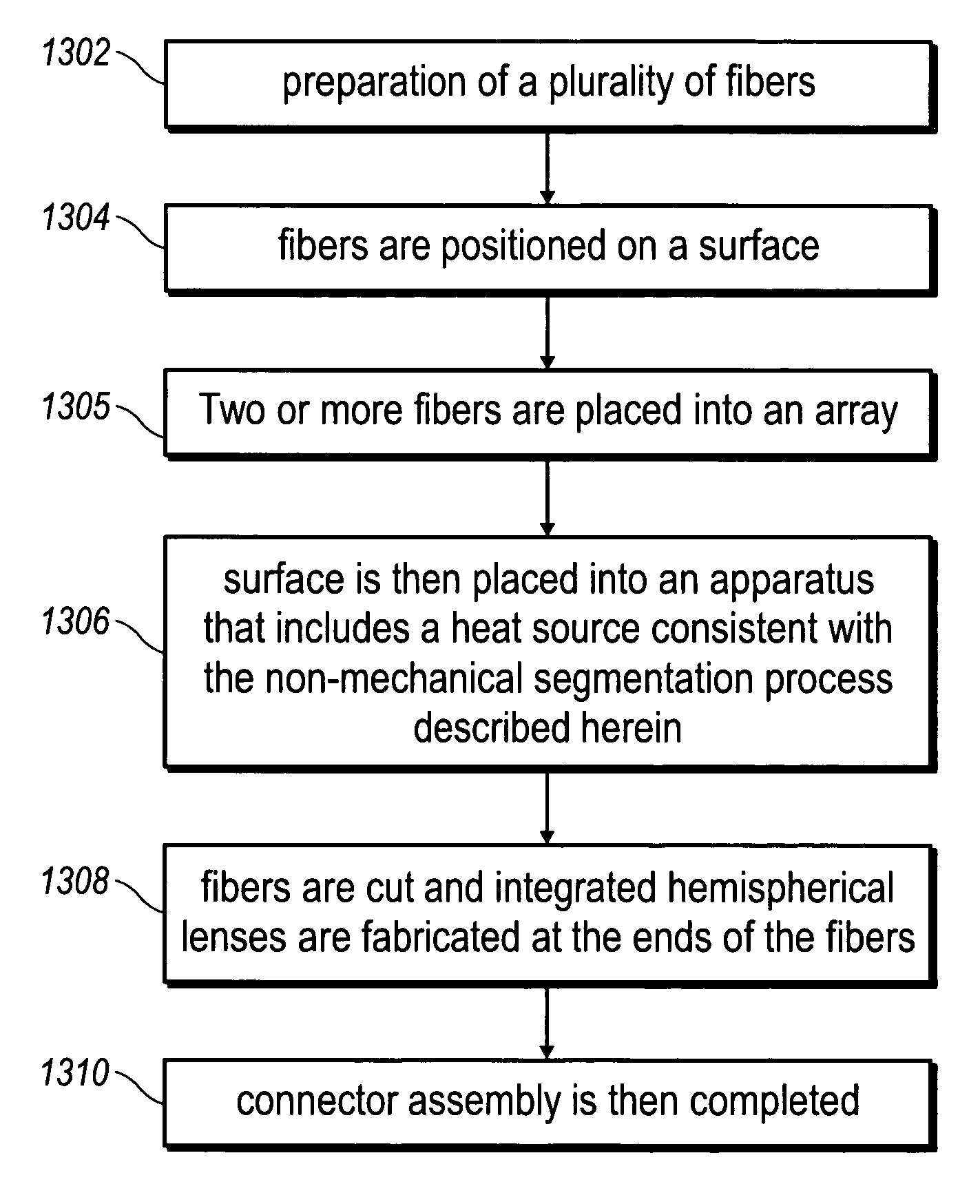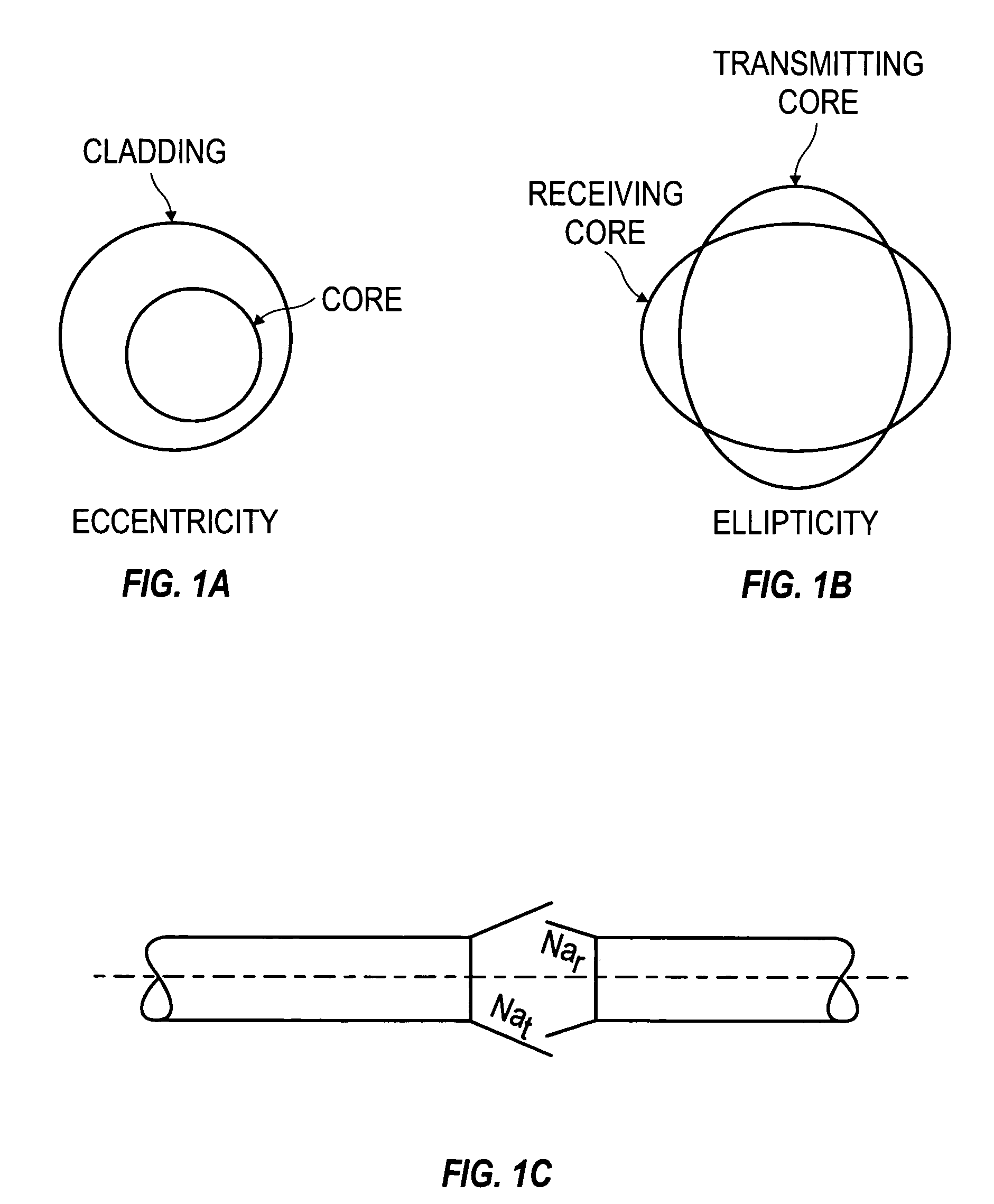Arrayed multi-fiber connector
a multi-fiber connector and connector technology, applied in the field of optical fiber coupling, can solve the problems of insertion loss, aberration and irregularity, and no perfect connector exists
- Summary
- Abstract
- Description
- Claims
- Application Information
AI Technical Summary
Benefits of technology
Problems solved by technology
Method used
Image
Examples
Embodiment Construction
[0034]The numerous innovative teachings of the present application will be described with particular reference to the presently preferred embodiment (by way of example, and not of limitation).
[0035]In a preferred embodiment, the present innovations are implemented in the context of an array of optical fibers assembled as part of an optical connector apparatus. The optical fibers are preferably assembled into the arrays as described below, and then lenses are formed on the optical fibers using, for example, an energy source, preferably a laser (however, this order can be varied within the scope of the present innovations). These and other innovative aspects are described below.
[0036]FIG. 5 shows a pair of fiber ends 502, 504 with integrated hemispherical lenses 506, 508 formed on each of the fiber ends 502, 504. In this example, lens 506 focuses light from fiber 502 into fiber 504 through lens 508. In a preferred embodiment, the lenses are shaped using a method that shapes the optica...
PUM
 Login to View More
Login to View More Abstract
Description
Claims
Application Information
 Login to View More
Login to View More - R&D
- Intellectual Property
- Life Sciences
- Materials
- Tech Scout
- Unparalleled Data Quality
- Higher Quality Content
- 60% Fewer Hallucinations
Browse by: Latest US Patents, China's latest patents, Technical Efficacy Thesaurus, Application Domain, Technology Topic, Popular Technical Reports.
© 2025 PatSnap. All rights reserved.Legal|Privacy policy|Modern Slavery Act Transparency Statement|Sitemap|About US| Contact US: help@patsnap.com



